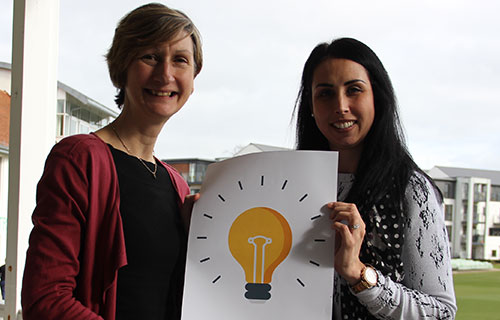Assessing and treating patients with venous leg ulcers more quickly, efficiently and with greater clinical outcomes is the aim of a project which our Tissue Viability Team has got underway.
A Doppler assessment is often carried out with these patients to rule out peripheral arterial disease, a condition affecting the arteries. This takes 40 minutes and can be uncomfortable and even painful for patients, if they struggle to lie down on a bed.
Carrying out the Doppler study, with a conventional Doppler machine, is also time-consuming for healthcare staff and so the team decided to use quality improvement tools and techniques to see if there was a better way.
They used process mapping to identify issues and researched what colleagues were doing elsewhere. As a result they purchased a new piece of equipment, for £2,000, which reduces the time needed to carry out the assessment from 40 minutes to just one.
Claire Acton, head of tissue viability at Kent Community Health NHS Foundation Trust (KCHFT), said: “The aim of the project is to improve the healing rates of patients with venous leg ulcers, within the Canterbury area. We are carrying out a pilot there and if it is successful it could potentially be rolled out across the county. There are benefits for both patients and our clinical staff and regarding the effective use of resources.”
Laura Lodge, a senior tissue viability specialist nurse at Faversham Cottage Hospital, said: “We identified a new piece of equipment which will enable us to do assessments quicker than using a hand held Doppler. With the new automated, digital Doppler we can carry out this assessment in just one minute.
“As a result we can start the most appropriate management intervention sooner, which means patients heal more quickly.
“The machine is quite new and only came out last year, so we sought advice from colleagues elsewhere and reviewed the literature and research.”
Clare and Laura have recently completed our Quality Service Improvement and Redesign (QSIR) Practitioners course.
One patient, who had a Doppler assessment, wrote to KCHFT to praise the care she was given.
The patient, who wanted to remain anonymous said: “Of particular importance to me was the automatic Doppler machine. Having been referred with a large lower leg wound, this system took less than two minutes to establish my ABPI, which significantly helped in keeping the pain of the pressure cuff to a minimum.
“In addition to clinical skills, the care, empathy, kindness and reassurance they provide is outstanding. This is the very heart of nursing excellence.”


